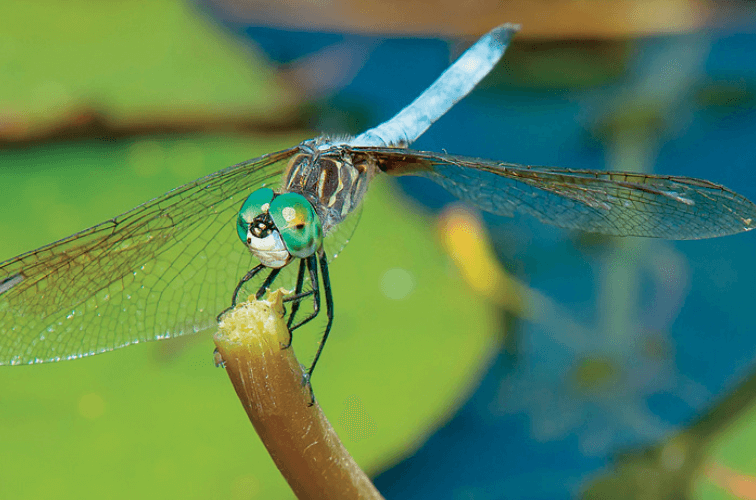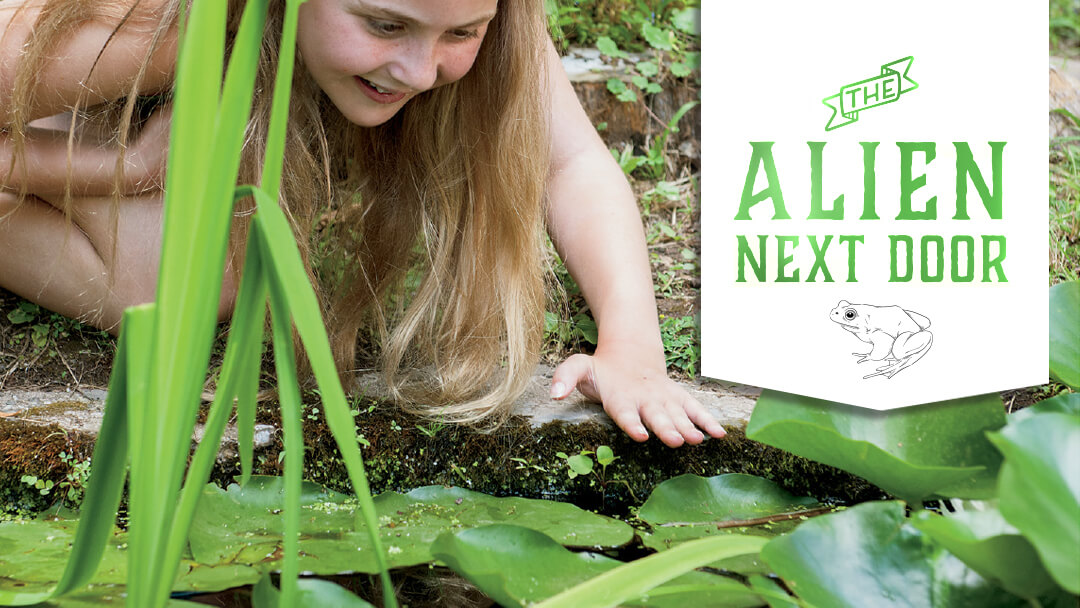by jacob rodenburg
Under a veil of water, In the mud and the ooze, A strange creatures lurks, A strange creature moves. You may think it’s an alien from some other place, But it has been here longer than our human race.
Ever think about what lives in the slime and the ooze of your nearby pond? It may seem like there isn’t a lot going on down in that muddy underworld — just some mud, plants and a few frogs. But you’d be surprised!
If you want to experience the alien next door, fetch a net, a white bucket, tweezers, some rubber boots, and if you have one, a magnifying glass. Visit a nearby pond. Choose one that has a shallow area with a muddy bottom. Make sure the kids are closely supervised. Scoop up a healthy glob of mud and using your fingers (or a stick), carefully sift through the gooey mass. Soon enough, you’ll spot something wriggling. Using the tweezers, remove the wriggler and rinse it in clean water and place this in the white bucket. Continue and repeat.
WHAT IN THE MUD?!
Chances are you’ll have discovered the amazing underwater, jaw-thrusting, jet-propelled bug snatcher! What on earth? While it may seem otherworldly, what you’ve captured is not some alien, but a baby dragonfly! Baby dragonflies start out their life as nymphs (the larvae stage) and depending on the species, they can live underwater for one to several years. And what hunters they are! They suck water in through their mouth and expel it out their rear end, surging forward like a jet fighter. Baby dragonflies have a folding lower jaw complete with a set of pincers that can thrust outward to seize their prey. They have been known to eat tadpoles, small bugs and even minnows. Want to see for yourself? Using the tweezers, you can gently unfold the lower jaw or labium by pulling it outward. You’ll notice the curved pincers on either end of the jaw. While you are at it, use your magnifying glass and look along the rear of their stomach or abdomen. Watch how the abdomen moves in and out, as the baby dragonfly extracts oxygen from the surrounding water.
DISCOVERING DRAGONFLIES
A baby dragonfly sheds its exoskeleton or skin as it grows. And when it is ready to change from an underwater critter to the acrobatic flying adult dragonfly with which we are all familiar, the nymph will crawl right out of
the water onto an overhanging branch or cattail. Slowly, the dragonfly will slip out of a split along its back and unfurl two pairs of brand new wings. If you are lucky, you can find empty skeleton cases near the edge of a pond. These exuviae are a wonderful treasure to add to your nature table.
Like the babies, adult dragonflies are voracious hunters. One dragonfly can devour up to 100 mosquitoes each day. And boy, are they fast! A dragonfly can zip along at speeds of almost 50 kilometres per hour, faster than Usain Bolt can run. And with their four independently moving wings, they can fly forward, backward, sideways, even straight up and down. Most dragonfly species catch their prey under their thorax (or mid-section), trapping them with special curved spines running along the inside of each leg.
Look deep into a dragonfly’s eyes and you’ll literally be staring back in time. They are among the oldest insects on earth. More than 300 hundred million years ago, giant dragonflies with wing spans of more than two feet wide cruised among the ancient ferns. They became so large, scientists believe, because there were much higher levels of oxygen in the atmosphere. And talk about hunting eyes! With up to 30,000 individual lenses in each eye, dragonflies have incredible vision. Their bulging eyes can detect movement up, down, to the side and even behind them.
TRY THIS WITH THE WHOLE FAMILY

1. Feed a dragonfly: In June or early July, you might come across a group of patrolling dragonflies, feasting on a swarm of insects. Take a soda cracker and crush it into the palm of your hands. Fling bits of the cracker high into the air. Sometimes a dragonfly will swoop by and snatch a crumb, thinking it is an insect. Be amazed at how agile, nimble and quick they are!
2. Catch a dragonfly: On a cool evening or morning, grab a net and silently sneak up behind a perching dragonfly. Make sure your shadow doesn’t fall over your quarry. Ease your net over the dragonfly. Gently hold it along the thorax (middle) between your thumb and index finger (don’t worry…it won’t bite and it certainly can’t sting). Then slowly pinch all four wings together over the body. If you wish, carefully move the dragonfly to a viewing jar. See if you can figure out what kind of dragonfly you’ve caught. Visit www. odonatacentral.org to help you. Males and females of the same species can often look quite different.
3. Make a Viewing Tube: Remove the ends of a large can of coffee. Wrap one end with plastic film and secure it with an elastic. You’ve just made a great viewing tube. Simply place the plastic end just under the surface of the water of a pond or creek and stare into open end that is above water. Like a window, you’ll see into the heart of the busy underwater world!
Take the time to show your family the magic of nearby nature, even the very small. There are treasures to be found under rocks, logs and along the muddy edges of ponds and creeks. Remember, we live in “neighbourwoods” – and the critters that share our space are members of our community too. They merit being treated with gentle hands and with eyes of wonder.



